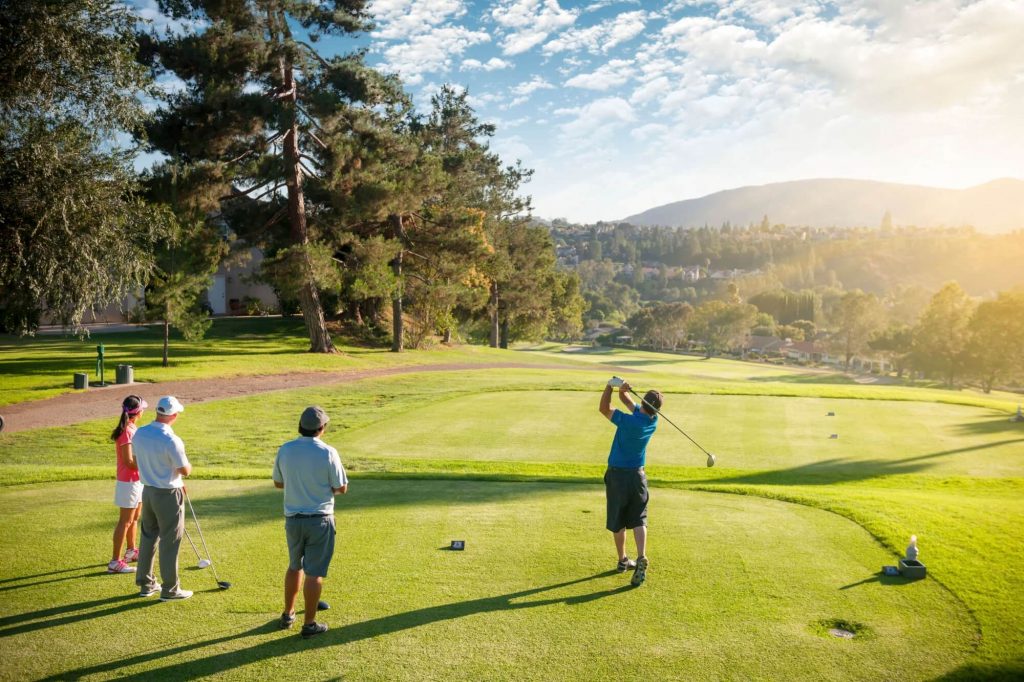
The Island
The island nation of Cyprus is situated in the eastern Mediterranean Sea. Geographically, it is in Western Asia, but its geopolitics and cultural linkages are primarily Southeastern European. The Mediterranean’s third-largest and third-most populous island is Cyprus. Nicosia is the nation’s capital and largest city. The Turkish Republic of Northern Cyprus is in charge of the northeastern part of the island.
Based on the Cyprus Convention, the UK took control of Cyprus in 1878, formally annexing the island in 1914. During British rule, the future of Cyprus became a matter of disagreement among the island’s inhabitants; with the Greek Cypriot majority population pursuing a union with Greece, while the Turkish Cypriot minority initially favored British rule and later the partition of Cyprus, for instance, driving rules are still similar to British Driving rules, such as driving on the left side of the road.
Money
The official unit of currency in North Cyprus is the Turkish lira, represented by the letters “TL”. In the larger cities, the euro and pound sterling are frequently accepted. University tuition is paid in euros, whereas investments are made in British pounds.
Cities
Three administrative regions, each named after its administrative center, split Northern Cyprus. The Famagusta, Kyrenia, and Nicosia districts have been governed by the Turkish Republic of Northern Cyprus since 1974. Note that there are numerous historical spellings and writings used in Cypriot cities today that vary depending on the language being used—whether it be Greek Cypriot, Turkish Cypriot, or English.
- Nicosia (Lefkoşa / Lefkosia) – the divided capital, with untouched beautiful historical buildings in the walled city and an increasingly vibrant city center outside the walls
- Kyrenia (Girne / Keryneia) – a beautiful Mediterranean city with a historical harbor, a castle overseeing it, and under the beautiful Beşparmak/Pentadaktylos mountains, swarming with good seaside hotels, beaches, and clubs
- Famagusta (Mağusa / Ammochostos) – home to a beautiful walled town, a ghost quarter under military control, good beaches, and a vibrant nightlife
- Morphou (Güzelyurt / Omorfo) – the gateway to the greenest area of Northern Cyprus, surrounded by citrus trees, home to a historical church and a nostalgic town center
- Lefke (Lefka) – green and mountainous, home to beautiful date trees and sea view, and a historical mosque, gateway to Dillirga, the remote and beautiful part of Northern Cyprus
- İskele (Trikomo) – small and similar to any major Cypriot village, gateway to the Karpaz Peninsula, beautiful beaches, and home to good traditional restaurants.
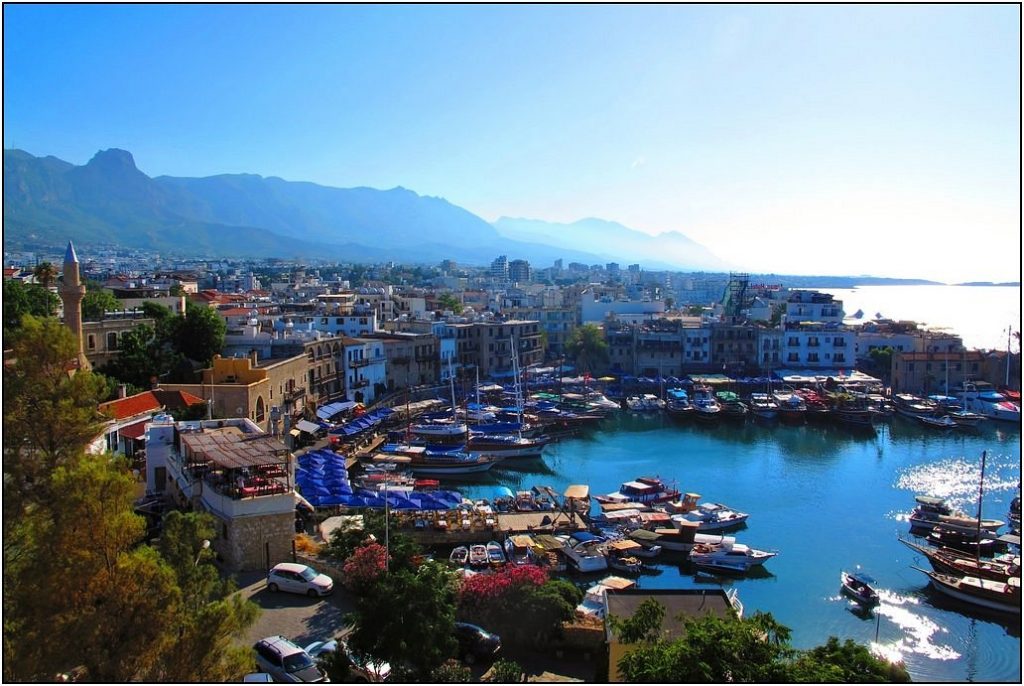
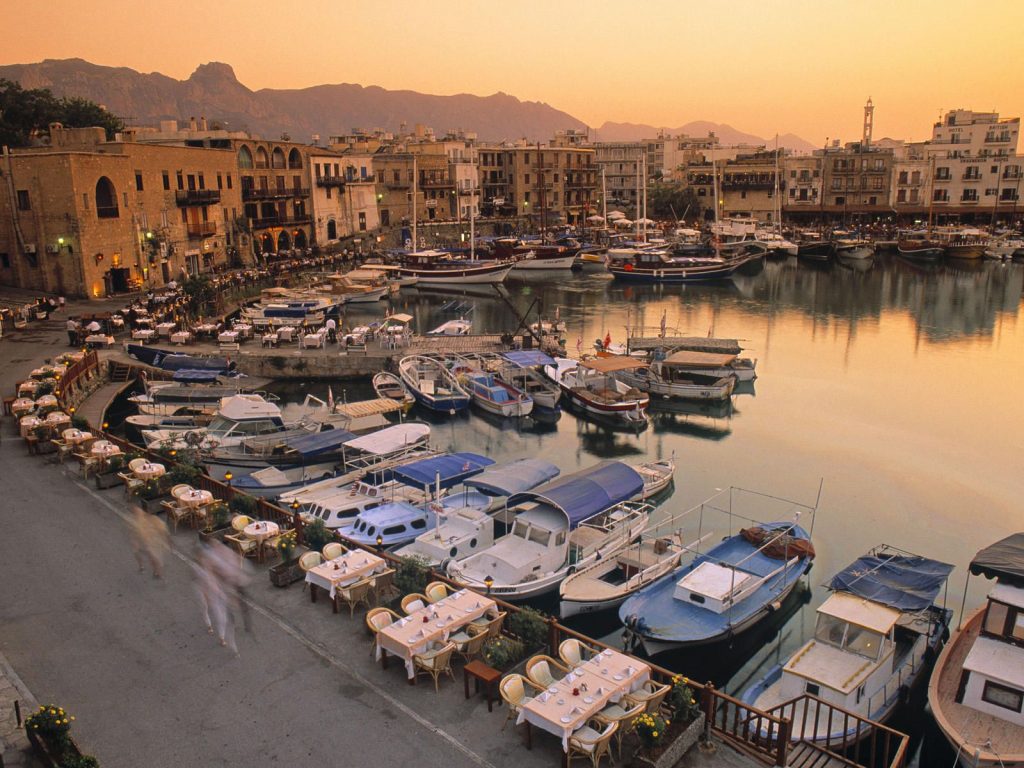

Climate
Northern Cyprus experiences a chilly and rainy winter, especially between December and February, which accounts for 60% of the region’s yearly rainfall. The majority of the rivers are filled by these winter torrents of rain, which normally dry up as the year goes on. Despite the cold temperatures at night, snow has only occasionally fallen elsewhere but has been known to fall on the Kyrenia Range. The short spring is characterized by unstable weather, occasional heavy storms, and the “meltem”, or westerly wind. Summer is hot and dry enough to turn low-lying lands on the island brown. Parts of the island experience the “Poyraz”, a north-westerly wind, or the sirocco, a wind from Africa, which is dry and dusty. Summer is followed by a short, turbulent autumn.

Sightseeing and historical places
- Kyrenia Harbour and Castle
- Castles (St Hilarion Castle, Buffavento, and Kantara Castle)
- Walled City of Nicosia (Girne Kapisi – Old Town)
- Salamis ruins near Famagusta
- Walled City of Famagusta
- The Ghost Town (Marash Town – Varosha Town)
- Bellapais
- Apostolos Andreas Monastery
- Karpaz National Park
- Cape Apostolos Andreas
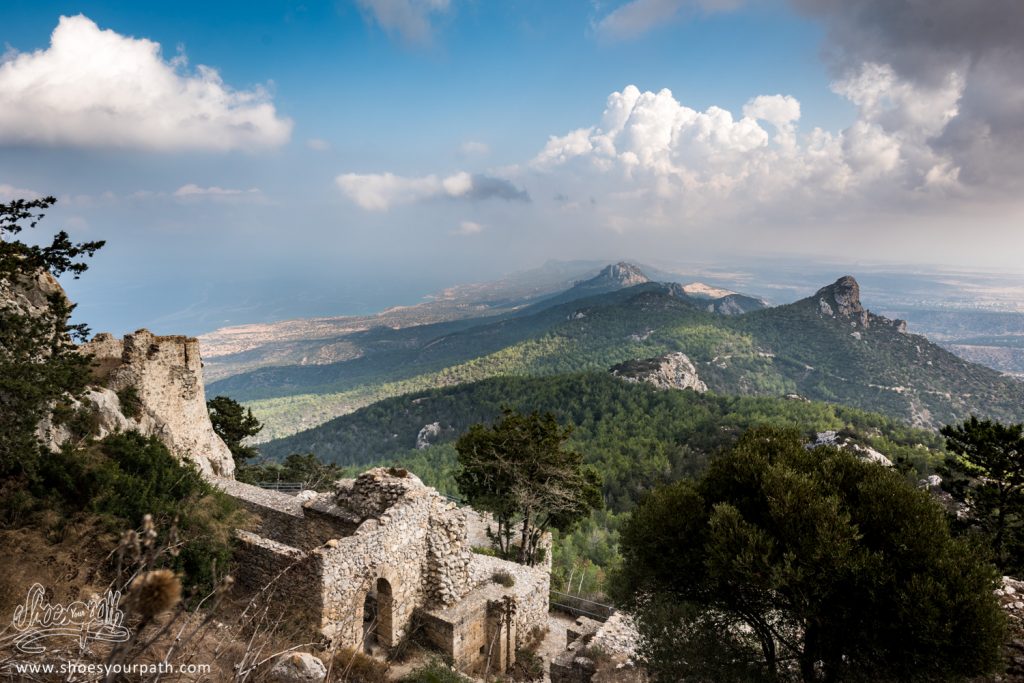
Cyprus entertainment

- Beaches
- Beaches are an important feature of Northern Cyprus, found throughout the coastline from the westernmost Yeşilırmak to the easternmost Dipkarpaz. There is a beach for everybody: for those who like to indulge in the luxury of seaside resorts to those who love the remote unspoiled golden stretches of sand.
- Casinos
- Northern Cyprus has been dubbed as the Turkish Las Vegas. Casinos attract many visitors from Turkey and the Republic of Cyprus, where they are banned, and from foreign countries.


- Nightlife
- Kyrenia and Famagusta have a vibrant nightlife, with numerous dance clubs and concerts in the summer. Nicosia may be a disappointment for the seekers of such activities.
- Water sports
- Water sports such as windsurfing, jetskiing, scuba diving, waterskiing and sailing are also available at beaches throughout the coastline.

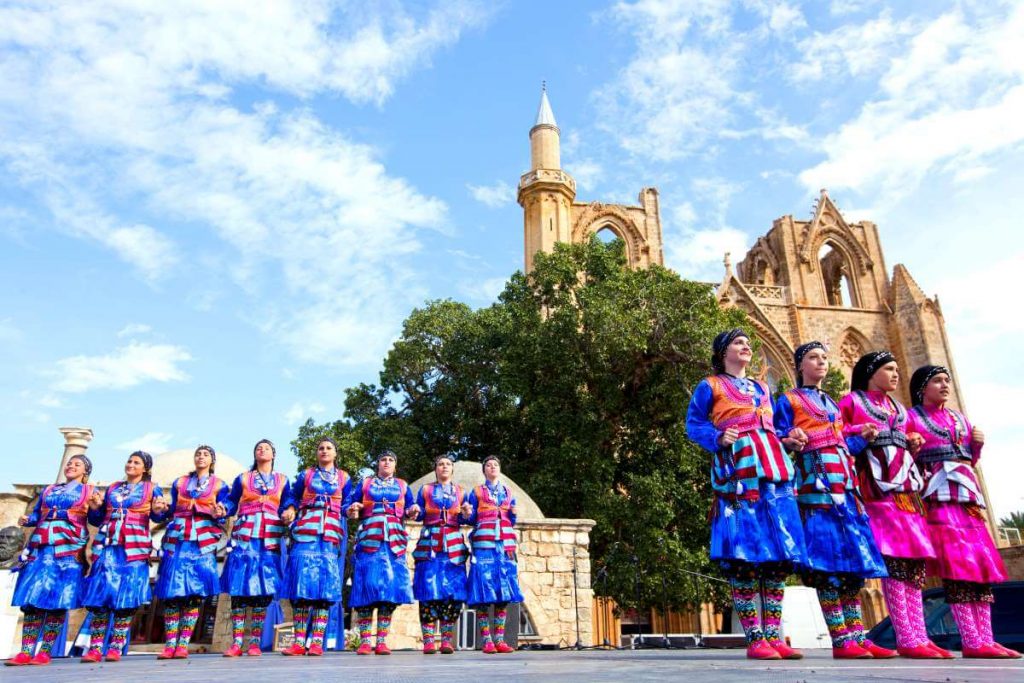
- Festivals
- Numerous festivals take place throughout Northern Cyprus, organized by almost every municipality.
- Paragliding
- Seeing the beauty of Northern Cyprus from 750 m (2500 feet) and gliding down is an unforgettable experience and well worth it. You can find companies which organize this at the Kyrenia Harbor, especially Tandem Paragliding.
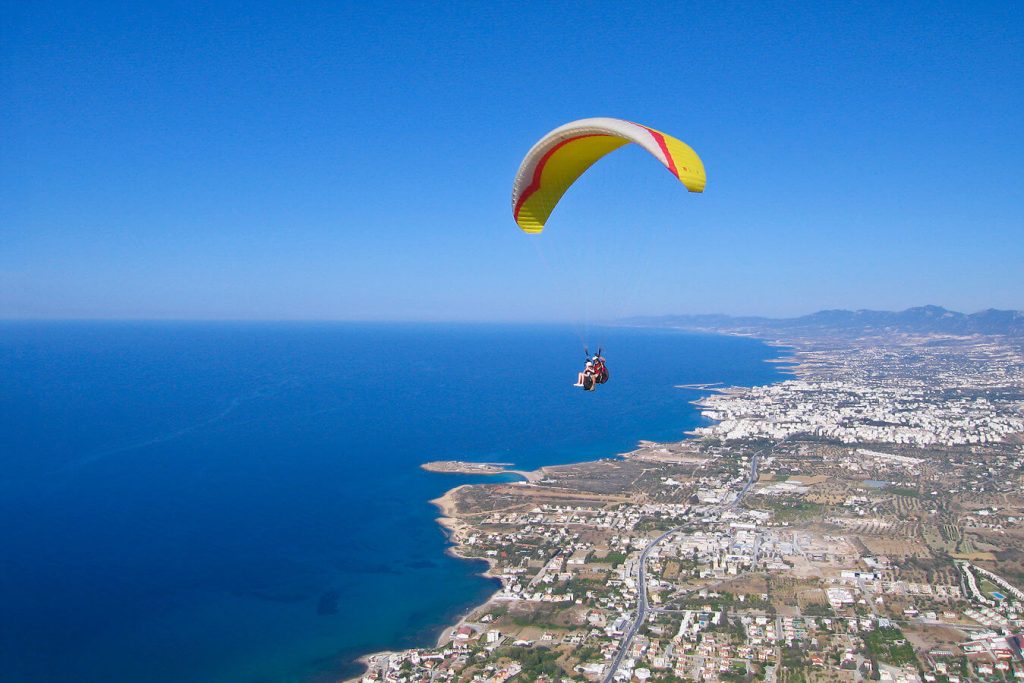
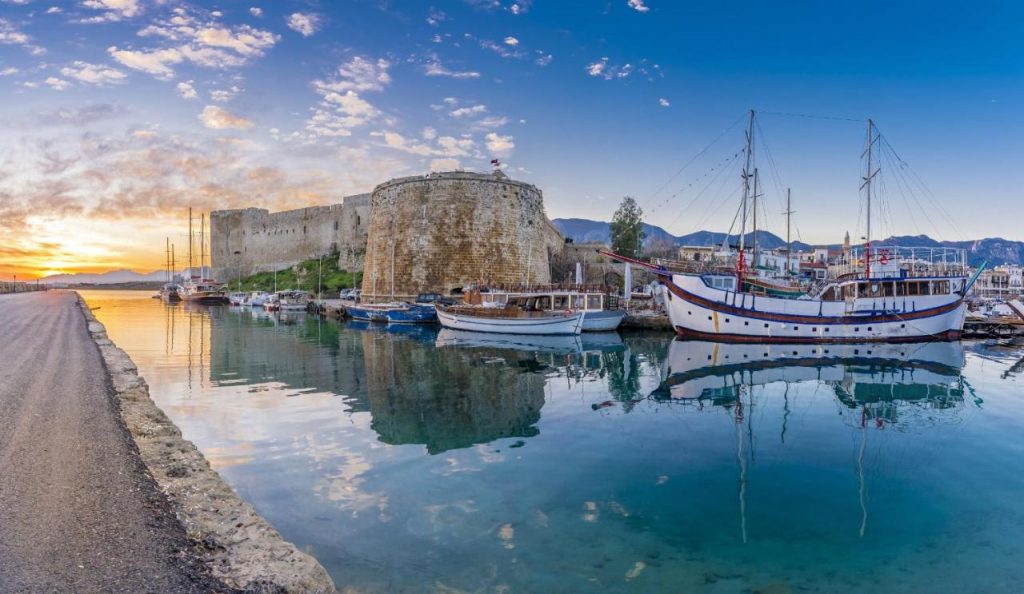
- Boat tours
- There is no difficulty in finding boat or yacht tours to explore the northern coast from the Kyrenia Harbor during summer. Boat tours from the port of Famagusta to the Karpaz Peninsula are also available.
- Golf
- Korineum Golf & Country Club has been the Med’s natural golf paradise since the Grand Opening in April 2007. The unique design enables the golfers to enjoy mountain and seas view from each hole making it a breathtaking experience and also a golfing challenge that golfers want to experience over and over again.
